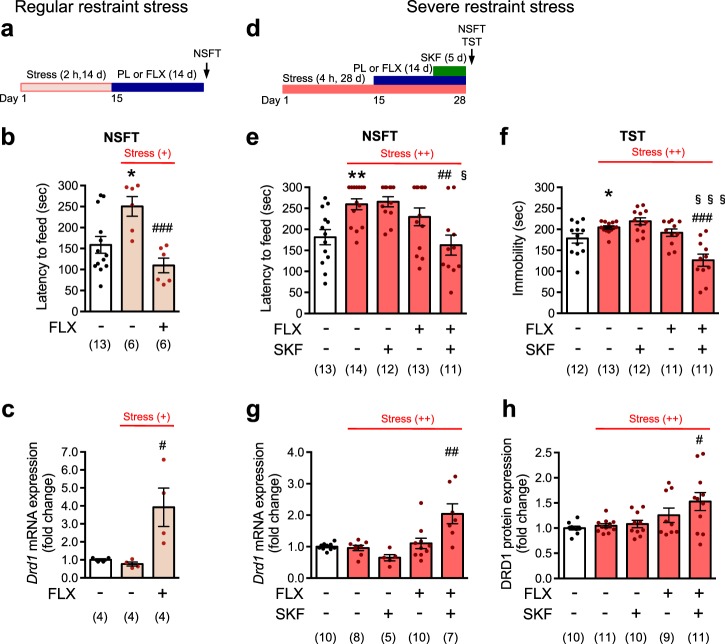Fig. 5.
D1 receptor activation enhances antidepressant actions under severe stress conditions. a−c Regular restraint stress. a An experimental design for regular restraint stress and fluoxetine (FLX; 15 mg/kg/day for 14 days) administration. b The latency to feed in NSFT was evaluated on day 29 in mice subjected to regular restraint stress. c mRNA levels of Drd1 in the dentate gyrus were evaluated after behavioral analyses. *p < 0.05 vs. the stress (−)-placebo group; #p < 0.05, ###p < 0.001 vs. stress (+)-placebo group; Student’s t test. d−h Severe restraint stress. d An experimental design for severe restraint stress and fluoxetine and R(+)-SKF81297 (SKF; 1.5 mg/kg i.p. for 5 days) administration. The latency to feed in the NSFT (e) and the immobility time in TST (f) were evaluated on day 29 in mice subjected to severe restraint stress. mRNA (g) and protein (h) levels of Drd1 in the dentate gyrus were evaluated after behavioral analyses. Dissected tissues of the dentate gyrus from hippocampal slices were randomly split into mRNA and protein analyses, although all the tissues were used for either mRNA or protein analysis in some mice. *p < 0.05, **p < 0.01 vs. stress (-)-placebo/saline group; Student’s t-test. #p < 0.05, ##p < 0.01, ###p < 0.001 vs. stress ( + + )-placebo/saline group; §p < 0.05, §§§p < 0.001 vs. stress (++)-fluoxetine/saline group; one-way ANOVA and Newman−Keuls post hoc test. The number of mice is indicated in parentheses under each experimental condition

